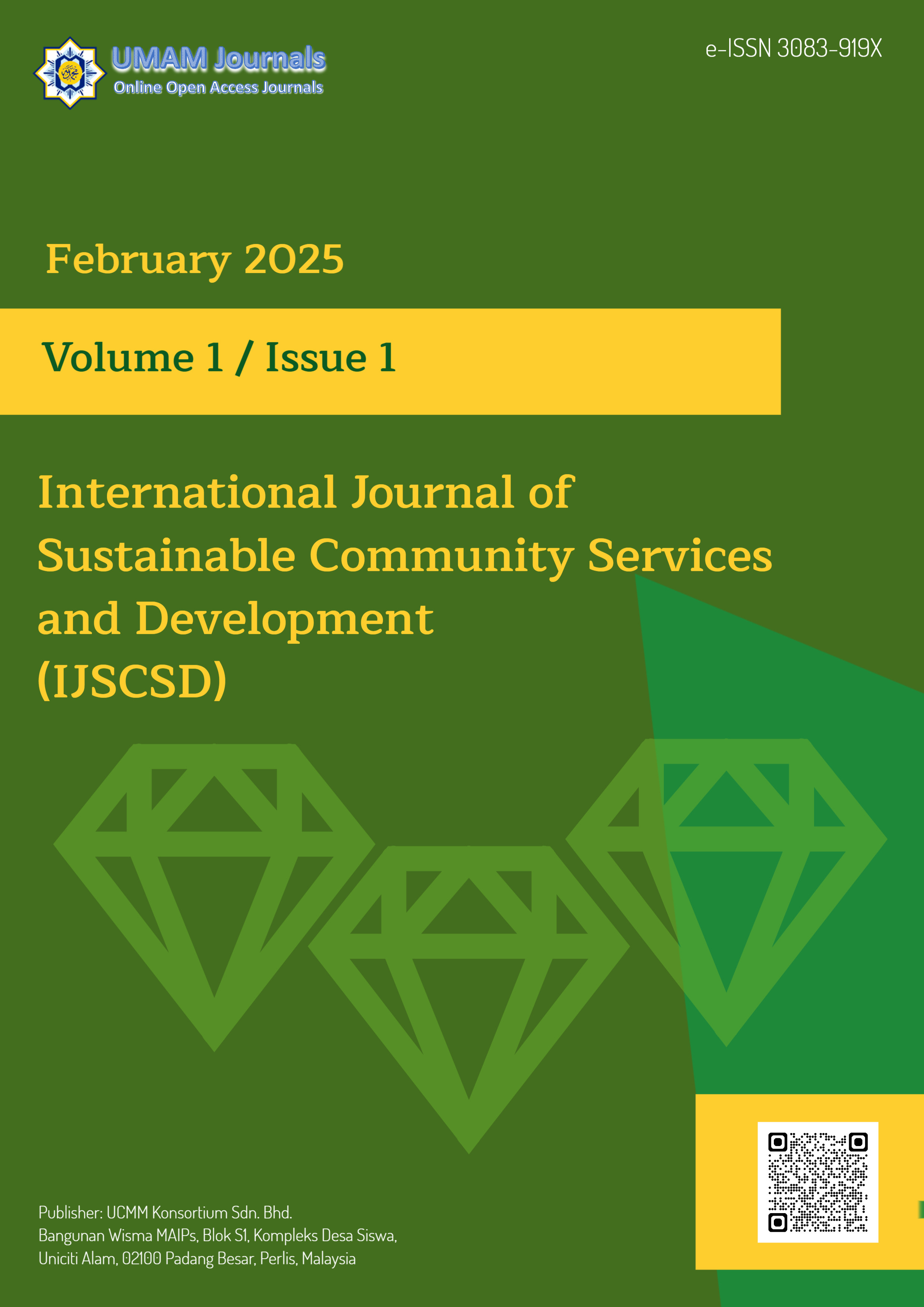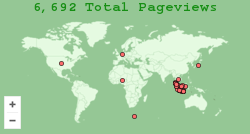Optimizing destination branding in Pampang Cultural Village, East Kalimantan
DOI:
https://doi.org/10.63088/vyd1qp23Keywords:
Pampang cultural village, Destination branding, Digital marketing, Event managementAbstract
Purpose: To improve the quality of event management as part of the destination branding strategy in Pampang Cultural Village, East Kalimantan. The problems addressed include lack of information regarding ticket purchases, minimal variety of cultural performances, and weak event management.
Methods: The method used involves a participatory approach with five main stages: identifying problems through observation and interviews, planning joint solutions, implementing solutions, evaluating results, and sustainable development. Some of the solutions implemented include excellent service training, providing information boards, redesigning tickets, and creating tourist brochures.
Result: The results of community service showed that the excellent service training successfully increased participants' understanding of event management, although there was resistance to modifications in traditional dance. In addition, the installation of information boards helped visitors more easily understand the services offered, such as the ticket purchase process to take pictures with the dancers. The redesign of the photo ticket also succeeded in increasing professionalism in management. In addition, the creation of tourist brochures also introduced new attractions, including river tracing activities, which added to the appeal of Pampang Cultural Village as a tourist destination.
Conclusions: The program has successfully enhanced the branding strategy of Pampang Cultural Village by improving event management and visitor services. However, there is still room for further development, especially in the sustainable management of culture-based tourism. Collaboration between academics, communities, and local partners is key to the success of this program, providing real contributions to the local economy and inspiration for similar programs in the future.
Downloads
References
Chen, C. C., Chook, J. W., Nguyen, L. B., & Lee, C. H. (2024). Integrating Locals’ Importance–Performance Perception of Community Resilience into Sustainable Indigenous Tourism Management. Sustainability (Switzerland) , 16(12).
Elizabeth, A.-O., T.O, F., & M.O., À. (2023). The Impact of Destination Brand Image on Entrepreneurial Development in the Tourism Host Communities in the South-West Region of Nigeria. International Journal of Research Publication and Reviews, 4(7), 1773–1780.
Hadianfar, N. (2021). Impact of Social Media Marketing on Consumer-Based Brand Equity for Tourism Destination.
Huyen, L. T. T., Van, L. H., Vinh, N. T., & Tri, C. T. (2024). Tourists’ satisfaction on cultural heritage tourism quality: An empirical study Hanoi, Vietnam. Multidisciplinary Science Journal, 6(10).
Imbaya, B., & Rw, N. (2021). Community Capacity Strengthening for Inclusive Community-Based Tourism.
Ishak, R. P. (2024). Capacity Building and Community Empowerment Strategies Based on Local Wisdom: A Case Study of Cimande Village. TRJ Tourism Research Journal, 8(2), 239.
Keskinen, P., Arvila, N., Winschiers-Theophilus, H., & Nieminen, M. (2020). The effect of digital community-based tourism platform to hosts’ livelihood. Communications in Computer and Information Science, 1236 CCIS, 3–16.
Kim, E. G., Chhabra, D., & Timothy, D. J. (2022). Towards a Creative MICE Tourism Destination Branding Model: Integrating Heritage Tourism in New Orleans, USA. Sustainability (Switzerland), 14(24).
New Construction of the Integration of Intangible Cultural Heritage and Tourism Industry. (2024). International Journal of Frontiers in Sociology, 6(3).
Puspitasari, K. (2024). Role Of Village Capacity Building In Increasing Original Village Income From The Tourism Sector: A Case Study Of Organization Output. Journal of Global Tourism and Technology Research, 5(1), 27–35.
Rais, S., Faridah, A., Yuliana, Y., & Ambiyar, A. (2022). model development of community-based and digital tourism village in Belakang Padang. International Journal of Health Sciences, 11822–11835.
Setokoe, T. J., & Ramukumba, T. (2022). Ability to do for self. A rural community’s view of the importance of capacity building in sustainable tourism development. Geojournal of Tourism and Geosites , 41(2), 583–588.
Seyfi, S., Hall, C. M., & Rasoolimanesh, S. M. (2020). Exploring memorable cultural tourism experiences. Journal of Heritage Tourism, 15(3), 341–357.
Shutaieva, E., Pobirchenko, V., Karlova, A., & Polyukhovich, E. (2020). Branding of Tourist Destinations. Journal of Environmental Management and Tourism, 11(4), 973.
Son, C. M. (2023). Exploring the Impact of Cultural Heritage on Destination Branding and Tourist Experiences: Perspective from South Korea. Journal of Hospitality & Tourism Management, 6(1), 1–10.
Sufa, S. A., Setiawati, D., Afiat, M. N., Rijal, S., Soetomo Surabaya, U., Pariwisata, A., Banjarmasin, N., Oleo, U. H., & Makassar, U. N. (2024). The Influence of Tourism Infrastructure and Online Promotion Of Tourist Visit Intention (Study on the Island of Bali with Tourist Satisfaction as an Intervening Variable) (Vol. 5, Issue 2). https://ijble.com/index.php/journal/index
Wahab, H. A., & Rady, A. (2023). Exploring the Effectiveness of Using Digital Tourism Platforms in Egyptian Tourist Destination. In JAAUTH) (Vol. 24, Issue 1). https://jaauth.journals.ekb.eg
Wahyuhana, R. T., Tisnawati, E., & Trimarstuti, J. (2021). Community capacity building based on local wisdom through the management of the Brontokusuman tourism village, Yogyakarta. Community Empowerment, 6(12), 2257–2264.
Widiastuti, T., Mihardja, E. J., & Agustini, P. M. (2020). Samarinda City Branding through Tourism Communication of Dayak Village in Pampang. Mediator: Jurnal Komunikasi, 13(1).
Zhu, L., Zhan, L., & Li, S. (2021). Is sustainable development reasonable for tourism destinations? An empirical study of the relationship between environmental competitiveness and tourism growth. Sustainable Development, 29(1), 66–78.
Zhu, Y., Zhu, L., & Weng, L. (2024). How Do Tourists’ Value Perceptions of Food Experiences Influence Their Perceived Destination Image and Revisit Intention? A Moderated Mediation Model. Foods (Basel, Switzerland), 13(3), 412.
Downloads
Published
Issue
Section
License
Copyright (c) 2025 Rina Masithoh Haryadi, Taghfirul Azhima Yoga Siswa, Astrid Napita Sitorus, Zilfana Zilfana

This work is licensed under a Creative Commons Attribution 4.0 International License.
Authors retain copyright and grant the journal right of first publication with the work simultaneously licensed under a Creative Commons Attribution 4.0 International License that allows others to share the work with an acknowledgement of the work's authorship and initial publication in this journal.





